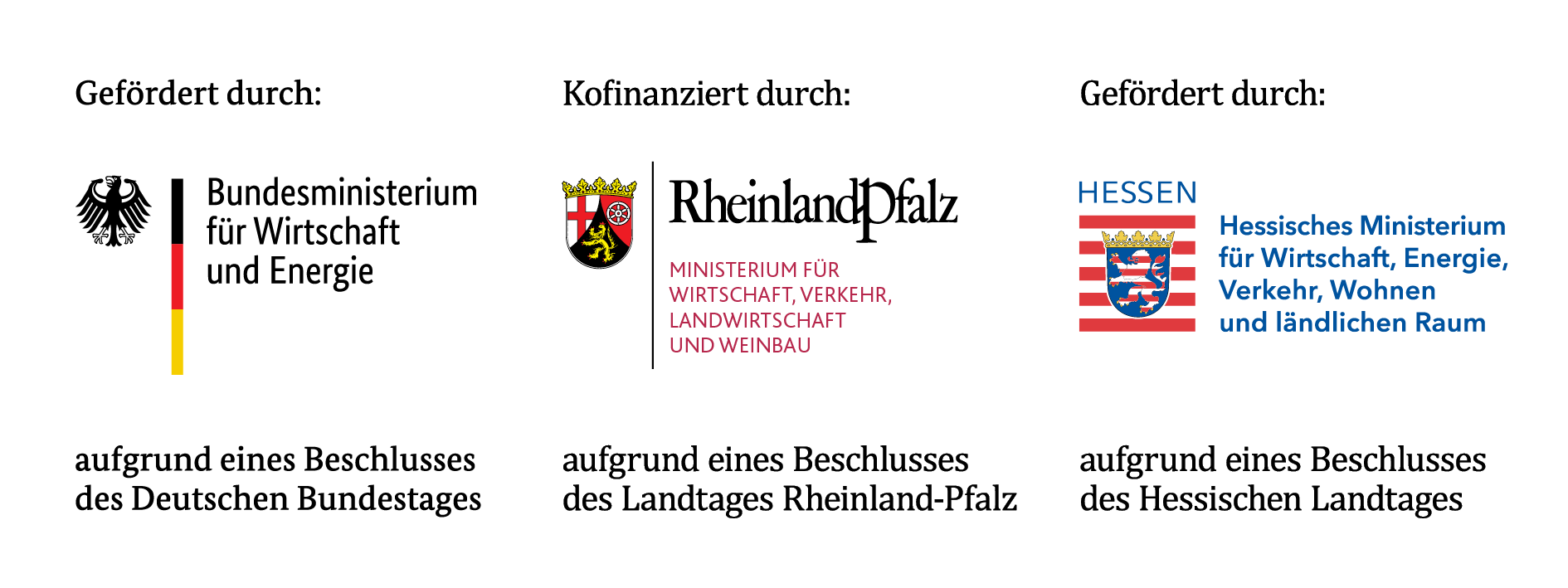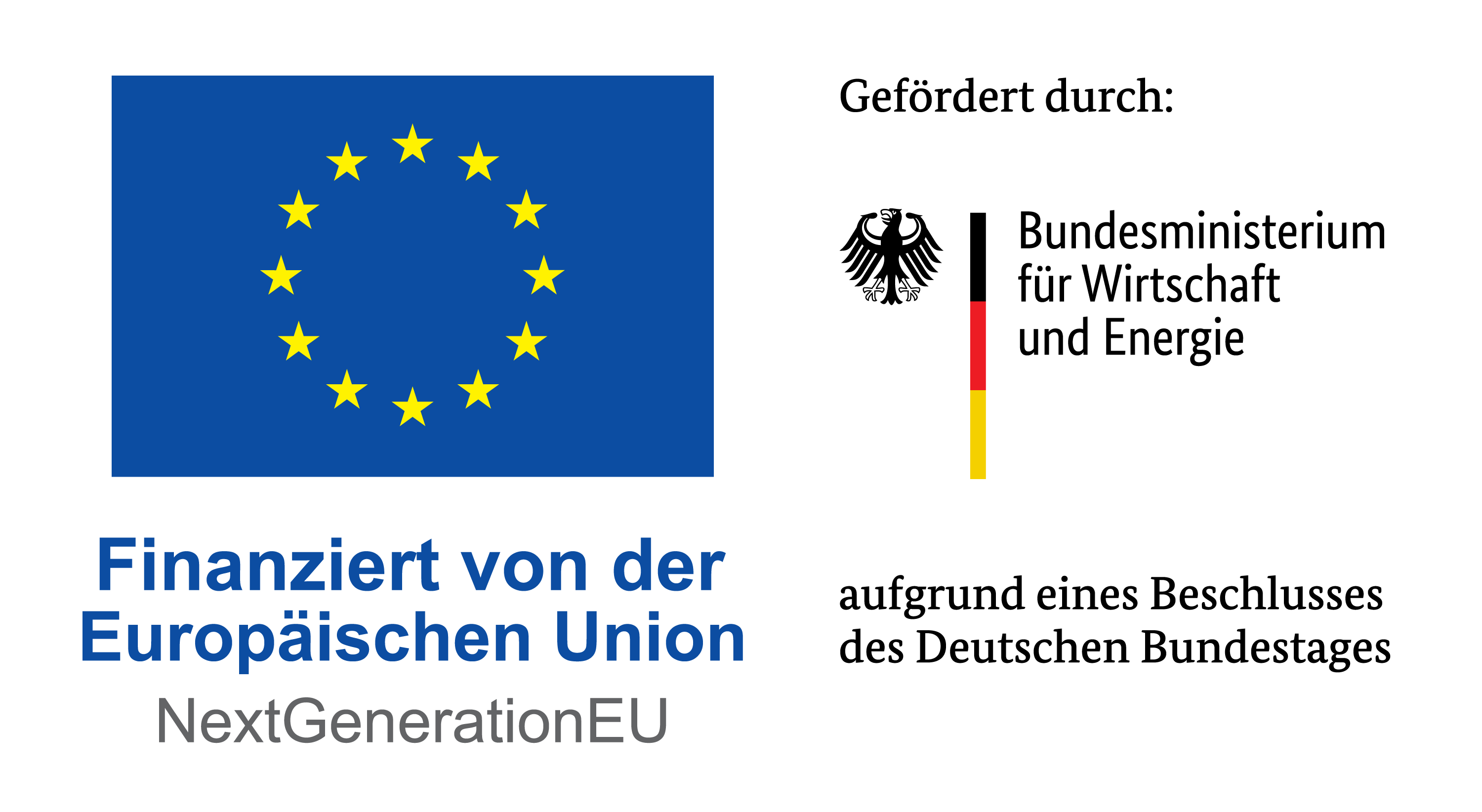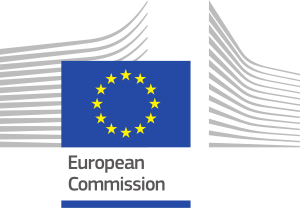
Useful information FAQs.
Below you’ll find an overview of frequently asked questions about Vulcan, lithium, geothermal energy, drilling, plants, and seismicity.
Lithium production Lithium
- Lithium-rich brine from underground in the Upper Rhine Valley is pumped to the surface.
- Then, the lithium is extracted from the brine using Adsorption-type Direct Lithium Extraction (A-DLE). This technology has been used commercially since the 1990s.
- More specifically, the hot brine containing lithium is channeled through a type of filter known as a sorbent. The lithium ions remain suspended in this sorbent while the remaining brine flows through.
- The brine’s heat is used to drive the extraction process and to produce renewable heat and electricity. The brine is then returned to the natural reservoir – a closed cycle.
- A-DLE is a method to produce lithium from brine.
- The technology is already used in 10 % of global lithium production – trend rising.
- A-DLE’s advantages are low operating costs, reduced environmental impact, high product quality and a positive track record.
Lithium extraction from hard rock: Hard rock mining lithium minerals is a very energy-intensive process. The minerals are usually mined at around 1% Li₂O, meaning that 99% of the mined material is waste. The ore is concentrated to around 5-6% Li₂O, before being transported long distances to refineries which are usually in China. This means that around 94-95% of the shipped material is usually waste. The refinery uses a roasting process, which uses large amounts of fossil fuels to produce lithium hydroxide.
Lithium extraction through evaporation ponds: Lithium extraction from brines evaporates large quantities of water in some of the driest places on earth. It also has a significant CO₂ footprint, through large use of chemical reagents.
- VULSORB® is the proprietary lithium extraction technology that Vulcan uses to capture the lithium before the brine is returned to the subsurface.
- The aluminate-based sorbent has a higher performance and lower water consumption during lithium extraction compared to commercially available sorbents.
- VULSORB® can be used in Europe as well as in other brines worldwide.
- VULSORB® has been successfully tested with multiple brines, both in Europe and globally, and is available for licensing.
- The extracted lithium is first purified in a lithium extraction plant. It is then transported in an aqueous lithium chloride solution to a lithium electrolysis plant, where it is processed into the final product lithium hydroxide monohydrate (LHM).
- LHM is supplied to the automotive industry via cathode and battery cell manufacturers and used for the construction of electric vehicles or for renewable energy storage (solar and wind). At the end of the battery life cycle, the lithium can be recycled.
- No. Lithium extraction is a physical process, which means that only a few reagents are required.
- As the entire process takes place in a closed circuit, no other substances bound in the brine can escape.
- Lithium itself is not harmful to the environment. It is found naturally bound in several regions of Germany. In the process used by Vulcan, the lithium is always bound in an aqueous solution, is contained within a closed circuit, and therefore does not enter the environment.
- Risk only exists if lithium dust occurs. The only process step in which this can occur takes place at the Höchst Industrial Park, where the final product LHM is produced. However, the LHM is transported promptly to the battery manufacturers.
- In the realm of energy storage and the shift to electromobility, lithium-ion batteries have undoubtedly established themselves as a reliable and efficient technology, providing crucial advancements in various applications. Their high energy density, long lifespan, and widespread availability make them a frontrunner in the battery and automotive industry.
- Vulcan is gearing up to become Europe’s leading sustainable lithium business and to enable energy security through geothermal energy, aiming to establish a domestic and green lithium supply in Europe, for Europe, to support the battery automotive industry in its EV transition.
- Commercial series production of battery electric vehicles (BEV) using sodium-ion-batteries as alternative to lithium-ion-batteries has begun. Vulcan believes there is a place for sodium batteries in the market. While lithium-ion batteries currently hold certain advantages, such as greater energy efficiency and a more mature technology base, sodium-ion batteries may showcase potential benefits, e.g. in terms of cost and resource availability. In the EV sector, sodium-ion batteries will typically be used for smaller vehicle with shorter driving ranges.
- Embracing technological diversity is key to fostering innovation and sustainability, ensuring that both technologies can coexist and contribute to the green EV transition.
Geothermal renewable energy production Geothermal Energy
- Geothermal energy refers to the thermal energy stored beneath the earth’s solid surface.
- Geothermal energy can be used for heating, cooling and to generate electricity.
Learn more about geothermal energy here.
- The term “geothermal energy” is a generic term and refers to both near-surface and deep geothermal energy. The key difference between the two types lies in the depth of the drilling.
- While near-surface geothermal energy uses geothermal energy from depths of up to 400 metres, deep geothermal projects involve drilling up to several kilometres below the earth’s surface. The temperature rises with increasing depth of the drilling.
- As a result, heat from deep geothermal energy can supply entire neighbourhoods with heat or electricity, whereas heat from near-surface geothermal energy can only heat individual detached houses and apartment blocks.
- Vulcan utilises deep geothermal energy for its projects, as drilling up to 4 km underground is required to produce lithium from brine, resulting in a greater energy yield.
Deep geothermal energy in Germany has the potential to cover over a quarter of Germany’s heating requirements (source Fraunhofer 2022).
The advantages of geothermal energy are:
- Climate-friendly: When converting geothermal energy into electricity or heat, significantly less CO2 is produced compared to generating energy from coal and other fossil fuels.
- Unlimited supply: In contrast to fossil fuels, geothermal energy is inexhaustible.
- Consistency: Geothermal energy is base-load capable and therefore always available. Other renewable energy sources, on the other hand, are dependent on the day or weather.
- High efficiency: Hardly any heat energy is lost when providing heat with geothermal energy.
- Low space consumption: Compared to conventional oil or gas heating systems, geothermal connection stations in households are significantly smaller.
- Versatility: In addition to heat, geothermal energy can also be used to generate electricity and cooling.
The disadvantages of geothermal energy are:
- Cost intensity: The construction of a new geothermal plant is associated with high costs.
- Locally limited usability: Only a few regions in Germany have the necessary conditions to utilise geothermal energy.
- High expenditure: Complex preliminary work such as deep geothermal drilling is often required to find the required temperature level in deeper layers of the earth.
- Amid climate targets and rising energy prices, a self-sufficient, domestic energy supply is becoming increasingly important. Simultaneously, municipalities utilising geothermal energy are becoming more attractive as technology-friendly and environmentally conscious areas.
- Utilising geothermal energy enables municipalities to expand district heating networks. Local industry, particularly energy-dependent and energy-intensive companies, which must pay even greater attention to the corresponding savings potential due to CO2 pricing, can be supplied.
- Operating the plants creates additional jobs, generates business tax and strengthens the regional and local economy.
- Vulcan communicates via various channels: Media coverage (print and online), regular ASX reports, German FSE reports, regional project websites, and social media, local on the ground events, information sessions and community consultants.
- In the project regions, the regional management team organises information events and guided tours on site. The team travels to local communities with an InfoTruck and InfoTrailer to raise awareness of the project and answer any questions.
- Vulcan has information centres that are open during the week where the public can find out more about the project and ask questions. Appointments can be scheduled in advance.
- Vulcan is in close dialogue with the population through various information and communication campaigns, thus contributing to transparency and acceptance among the population.
- Particular attention is paid to the local project regions: for example, Vulcan provides information via information stands at various weekly markets in the region. Citizens can also access information at any time, e.g. via the Vulcan citizens’ hotline or at the local information centres in Landau and Karlsruhe, Germany.
Safety and groundwater protection Geothermal drilling
- As soon as the well site is set up, the drilling rig is erected and the drill pipe is ready, the drilling begins.
- The standpipe itself is only 30 to 40 metres deep. Smaller pipes, which are inserted into each other, follow, being sealed against each other to protect the groundwater. The wells are then drilled vertically to a depth of around 1,000 metres before they are deflected and lead at an angle into the permeable reservoir.
- During the drilling process, various experts are deployed to ensure that the drilling is carried out safely and to monitor the individual work steps. Once the desired end point of the well has been reached, several tests are carried out. Upon successful completion, the system is prepared for commissioning.
- The drilling site is built completely watertight to protect the surrounding area, especially the groundwater, from contamination.
- The site will be equipped with its own drainage system, which is independent of the public sewerage system. As in all commercial operations, wastewater is collected, analysed at regular intervals, and disposed professionally if necessary.
- A risk to the groundwater from geothermal energy can be ruled out.
- Although layers containing drinking water are drilled through, the drilling fluid seals all water-bearing layers.
- Several pipes are then cemented in place, which are interlocked and sealed with cement to provide multiple protection for the drinking water. The cemented gaps are also monitored for leaks using measuring devices.
- Measuring gauges are installed outside the drilling site in case, contrary to expectations, a change in the groundwater composition is registered.
- By regularly monitoring various parameters in the drilling, defects can be recognised at an early stage.
- In addition, a network of measuring points in the near-surface aquifer can help to ensure that any seepage of brine into near-surface aquifers can be detected at an early stage and suitable countermeasures can be initiated.
- Chemically analysing the brine prior to commissioning also enables a detailed risk assessment to be carried out, allowing the monitoring concept to be adapted accordingly.
- Brine in the Upper Rhine Valley contains dissolved radioactive elements due to the bedrock deep underground. However, measurements in geothermal plants have shown that radioactivity is practically negligible.
- Radioactive levels in brine are so low that a protective distance of a few centimetres from the pipes carrying brine is sufficient to prevent exposure on the plant site.
- The system components are labelled on the floor. Radioactivity can only accumulate in the heat exchangers, for example, if precipitation occurs.
- Over time, it has been possible to reduce the amount of these deposits further and further. The residues are removed during the annual inspection in compliance with all prescribed safety precautions to protect employees and are disposed of in accordance with an authorised disposal route.
- The drilling does not create cavities that could collapse and cause subsidence on the surface.
- Brine is extracted from fissures and pores in the sandstone, where the diameter of the drilling decreases with increasing drilling depth.
- In contrast to mining and oil production, utilising deep geothermal energy does not involve permanent extraction of ground resources because the brine is channelled back into the same reservoir after the heat has been taken out.
- In Germany, fracking is only permitted for research purposes under strict conditions and is not used by Vulcan.
- The brine reservoirs on the Upper Rhine are located in particularly permeable rock layers (shell limestone and coloured sandstone), making fracking, which is mainly used to tap impermeable rock layers, unnecessary.
Operating a Geothermal plant
- Vapour mainly occurs in older geothermal systems. This should not be the case with the new plants planned by Vulcan.
- Vapour can be released during the testing period, after drilling has been completed – this is almost pure water vapour and poses no danger.
- Geothermal systems are comparatively quiet due to the process and also in comparison with other commercial systems.
- Key system components are located in appropriately insulated buildings and comparatively loud, large cooling systems are not necessary.
- The same heat transfer media used in refrigerators and air conditioning systems are used in geothermal power generation systems. Usage and safety regulations apply to them.
- In addition, the safety precautions and fire protection regulations in the entire plant area are very high – even higher than those of a petrol station.
- Generally, all substances that come into contact with brine must be authorised by the authorities and are subject to the strict provisions of water law.
- First of all, the recycled water is not “cold”, but still has residual heat. At the geothermal power plant in Insheim, for example, the brine’s temperature drops from around 163 to 74 degrees Celsius.
- The cooling can lead to a contraction of the rock underground in the vicinity of the water return borehole. However, due to the low thermal expansion coefficients of the rock, this is very low and lies below the perception threshold.
- Temperature changes in the subsurface can generally lead to stress changes and contribute to the triggering of imperceptible earthquakes. However, these effects can be predicted in advance using modern numerical modelling.
Safe project execution Seismicity
- Seismicity is associated with any utilisation of the subsurface (e.g. mining, drinking water extraction, hydrocarbon extraction). The aim is to keep seismicity below the perception threshold and avoid even the smallest damage.
- To achieve this, all activities during project development and operation are monitored using highly sensitive vibration measurements and operations are adjusted accordingly.
- Thanks to 3D seismic technology, the subsurface can be investigated more precisely in advance than was the case with previous projects. This improved knowledge makes it possible to reduce seismicity.
- Interesting to know: In the incident in Staufen, where cracks occurred, no deep geothermal energy was used. It was a case of poorly executed drilling measures for geothermal probes at a maximum drilling depth of just 140 metres. (Staufen 2020: Link).
- The controlled construction and operation of a geothermal system will almost certainly prevent major damage.
- In the unlikely event that damage occurs, it is expected to be minor and will be promptly and efficiently addressed by Vulcan.
- The company has drawn up a detailed liability concept. This provides for a fund made available by Vulcan to settle minor claims via an independent ombudsman. Insurance may come into play in the unlikely event of major or very numerous incidents. Liability insurance usually only covers the current value.
- If, contrary to expectations, all insurance policies fail, for whatever reason, the Mining Damage Compensation Fund steps in, in which all mining companies, including Vulcan, are jointly and severally involved. However, this insurance has never needed to be utilised since it was introduced in the 1970s.
- During a 3D seismic survey, so-called vibro-trucks drive over roads and paths in the exploration area.
- The trucks lower a plate to the ground and cause it to vibrate.
These vibrations are recorded by earth microphones previously distributed in the region and are roughly comparable to the vibrations of a tram or a heavy lorry. - Measuring points on sensitive infrastructure (e.g. bridges or pipelines) are excluded from the measurement and the measurement time in a municipality is limited.
- Incidentally, seismology is the technique in which seismic waves are used to obtain information about the subsurface, while seismicity describes the observable earthquake activity in a region.
- The operation of a geothermal power plant can lead to induced seismicity, which is why the mining authorities require seismic monitoring for geothermal projects.
- This involves continuously measuring and analysing ground vibration velocities at various points around the power plant. The aim of the monitoring is to keep vibrations below the perception threshold, but in any case below the damage limit.
Phase One Lionheart Project About Vulcan
- Vulcan Energy Resources’ mission is to become Europe’s leading sustainable lithium business, enabling energy security through geothermal energy.
- Our integrated lithium and renewable energy project adapts existing, commercially proven technology to produce battery-quality lithium from naturally heated subsurface brine in the Upper Rhine Valley, to deliver a local source of sustainable lithium for the European battery industry, with a co-product of renewable energy to provide baseload renewable energy for local communities.
- The company has been listed on the Australian Stock Exchange since 2018 and additionally on the Frankfurt Stock Exchange since the beginning of 2022.
- Vulcan was founded in 2018 by Dr Francis Wedin and Dr Horst Kreuter to counteract existing dependencies on lithium imports and establish a sustainable lithium production in Europe.
- Our purpose: We will empower a carbon neutral future.
- Our mission: Becoming Europe’s leading sustainable lithium business and enabling energy security through geothermal energy.
- The Vulcan Group covers the entire geothermal value chain and the downstream submarkets. With the parent holding company Vulcan Energy Resources Ltd. in Australia and the German subsidiary Vulcan Energie Ressourcen GmbH, Vulcan Group manages the company’s activities.
- The Vulcan Group also includes other German companies such as Vercana GmbH, and Natürlich Insheim GmbH. In January 2023, Comeback Personaldienstleistungen GmbH was acquired, giving Vulcan access to qualified personnel from the drilling industry.
- Vulcan employs leading international experts in the field of geothermal energy and lithium production, with extensive experience in the sector.
- Vulcan has been producing green electricity at the geothermal power plant in Insheim since January 2022.
- Vulcan’s URVBF lithium resource represents Europe’s largest lithium resource (according to public, JORC-compliant data) and is a global tier-one lithium resource. It includes 27.7 million tonnes of contained Lithium Carbonate Equivalent (Mt LCE), of which 4.16Mt are to be developed as part of the Phase One Lionheart area.
- Vulcan’s licence area comprises 17 areas with a total area of 2,234 km2, which can be expanded in stages.
- The Upper Rhine Valley is a large, approximately 300 km long graben system with consistent geothermal lithium reservoirs in sedimentary rock.
- The Upper Rhine Valley Brine Field is a well-known mature and producing field with multiple chemical parks and > 1,000 existing wells
The Upper Rhine Valley is the largest lithium resource in Europe.
The Upper Rhine Valley also offers:
- a high lithium concentration in the brine (average 175 mg/l).
- high brine temperatures, which enable efficient energy production.
- high possible extraction rates due to good rock permeability.
- a comparatively low proportion of certain substances that could hinder lithium extraction.
- a high salt content, which drives the sorption process.
- the proximity to planned battery factories in Europe.
- Vulcan has entered its project level debt and equity financing program at the end of 2023.
- For lithium: Stellantis, Umicore, Renault Group, LG Energy Solution and Volkswagen.
- For heating: MVV Energie Mannheim, BASF (Memorandum of Understanding)
- Vulcan is aiming for a phased growth approach, Phase One starting from core of field where Vulcan already owns production/re-injection wells in operation.
- Phase One is focused on Vulcan’s proven, brine-producing Lionheart (LIO) development area in Rhineland-Palatinate, Germany. Lionheart focuses on Proved Reserves of 318kt LCE for years 0-15 of production, then Probable Reserves of 252kt LCE for years 16-30.
- 130km covers Vulcan’s entire process, from wellsite to battery-ready product.
- Germany’s Upper Rhine Valley is well supported by road, rail and river and a hub for industry.
- Vulcan’s customers are located within the region, reducing the lithium supply chain distance for EVs from 10,000s of kilometres to only a few hundred.
- Integrated renewable energy and lithium battery chemicals operation, close to lithium offtake customers and renewable heat customers.
Vulcan aims to begin commercial-scale lithium production two and a half years after the start of construction.



